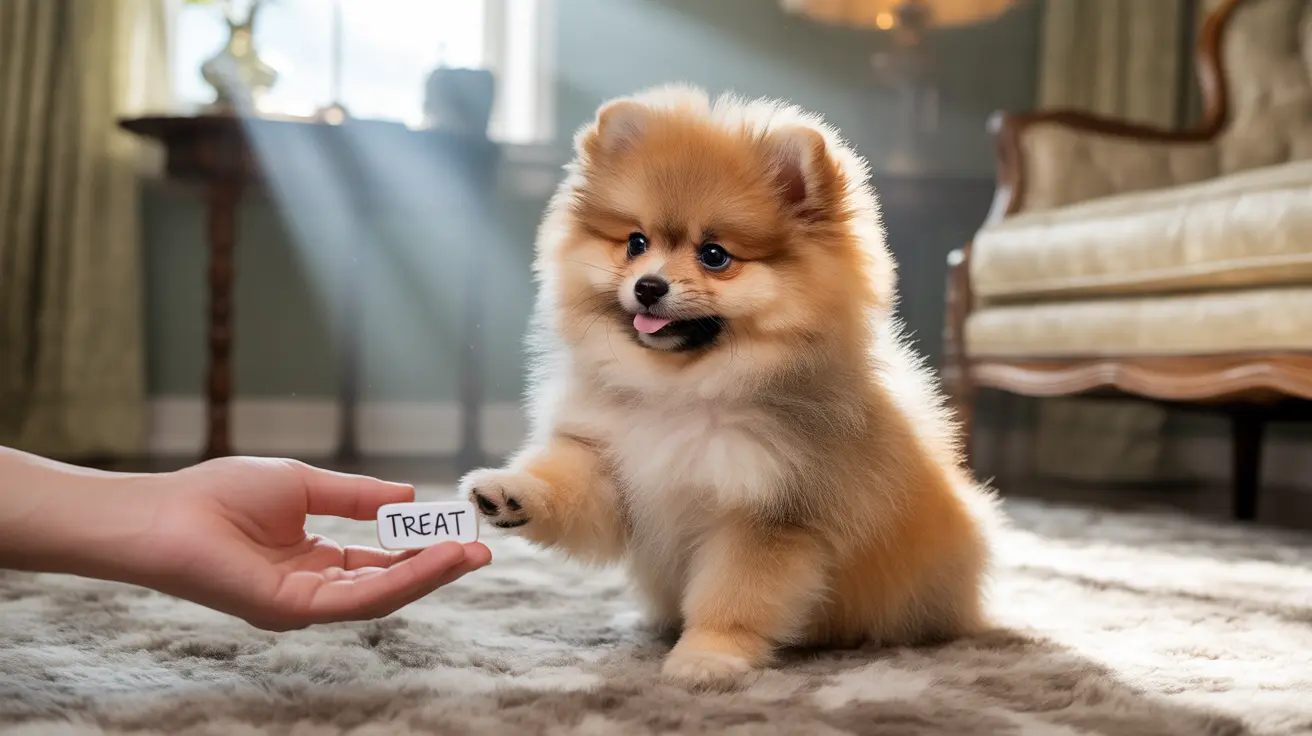Essential Foundations for Teaching Dog Tricks
Before diving into specific tricks, it's crucial to establish the right training environment and mindset. Start in a quiet, distraction-free area where your dog can focus entirely on you. Keep high-value treats handy – small, soft pieces that your dog can quickly eat without losing training momentum.
Remember that timing is everything in dog training. Reward your dog immediately when they perform the desired behavior, even if it's just a small step toward the final trick. This instant reinforcement helps them understand exactly what earned them the reward.
Setting Up for Success
Choose training times when your dog is alert but not overly excited. A tired or hungry dog won't learn effectively, while an over-energetic one may struggle to focus. Keep sessions short – 5-10 minutes is ideal – and always end on a positive note.
Basic Tricks to Start With
The Sit and Stay Foundation
Start with these fundamental commands as they form the basis for many advanced tricks. Hold a treat above your dog's head, moving it slightly backward. As their head tilts up to follow the treat, their bottom will naturally lower. Mark this behavior with a "yes" or clicker, then reward.
Teaching Shake and Wave
Once your dog masters sit, move on to shake. Hold a treat in your closed fist and wait for your dog to paw at your hand. When they do, mark the behavior and reward. After they consistently offer their paw, add the verbal cue "shake." Wave follows naturally from this – gradually raise your hand higher until they're lifting their paw in a waving motion.
Advanced Training Techniques
As your dog progresses, introduce more complex tricks by breaking them down into manageable steps. Use "shaping" – rewarding successive approximations of the desired behavior – to teach tricks like roll over, play dead, or spin.
Progressing to Complex Behaviors
For advanced tricks, consider using a combination of luring, shaping, and capturing methods. Each dog learns differently, so be prepared to adjust your approach based on what works best for your pet. Document progress to help identify areas needing more practice.
Common Challenges and Solutions
Even the most eager learners can hit roadblocks. If your dog seems frustrated or loses interest, try breaking the trick into smaller steps or switching to an easier trick temporarily. Maintain enthusiasm in your voice and body language – dogs are highly attuned to our emotional states.
Frequently Asked Questions
What is the best way to use positive reinforcement when teaching my dog new tricks?
Use a combination of treats, praise, and toys immediately after your dog performs the desired behavior. Keep rewards consistent and gradually phase them out once the trick is mastered, replacing them with intermittent rewards and verbal praise.
How can I teach my dog basic tricks like sit, shake paws, and wave step-by-step?
Start with one trick at a time, breaking each into small, achievable steps. For sit, lure with a treat above their head; for shake, wait for them to offer their paw; for wave, gradually raise the height of the shake command. Always reward successful attempts immediately.
How long should each dog training session be to keep my dog focused and motivated?
Keep training sessions short, typically 5-10 minutes, and conduct multiple sessions throughout the day. This helps maintain your dog's focus and prevents mental fatigue.
What tools and treats work best for training dogs to learn tricks?
Use small, soft treats that can be eaten quickly, a clicker for marking correct behaviors, and any necessary props specific to the trick being taught. Choose high-value treats your dog particularly loves for learning new or challenging tricks.
How do I progress from simple to advanced dog tricks without frustrating my pet?
Build on successful basic tricks gradually, ensuring your dog has mastered simpler commands before moving to more complex ones. Break advanced tricks into smaller components and always maintain a positive, encouraging training environment.
Conclusion
Teaching your dog tricks is a rewarding journey that strengthens your bond while providing mental stimulation for your pet. Remember to stay patient, consistent, and positive throughout the training process. With dedication and the right approach, you'll be amazed at what your dog can learn.






